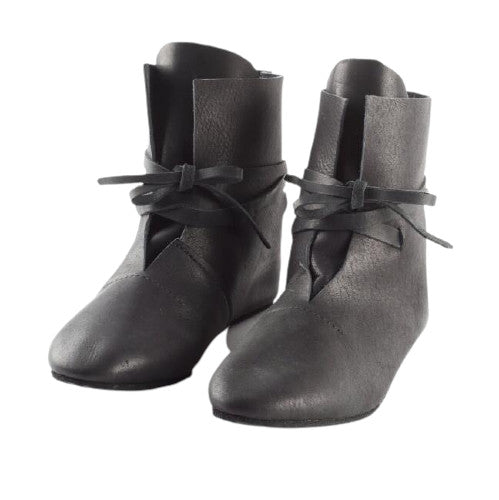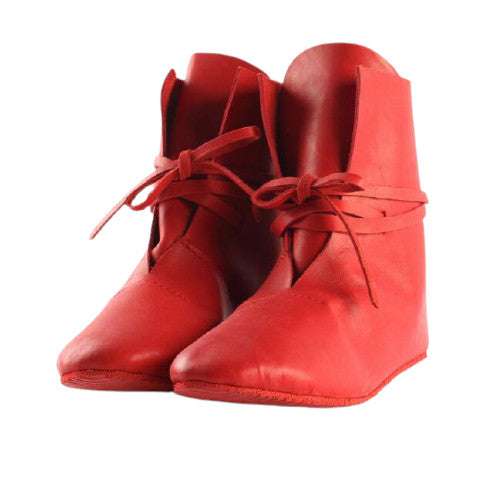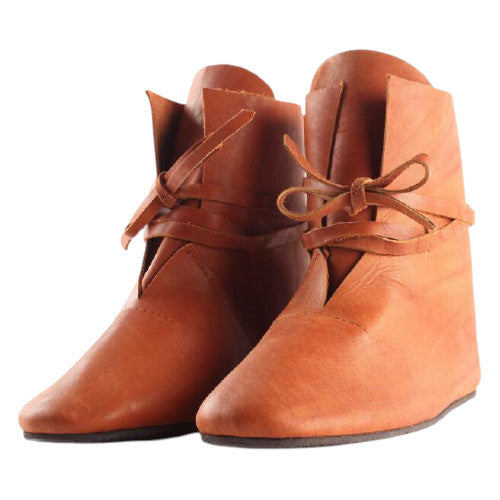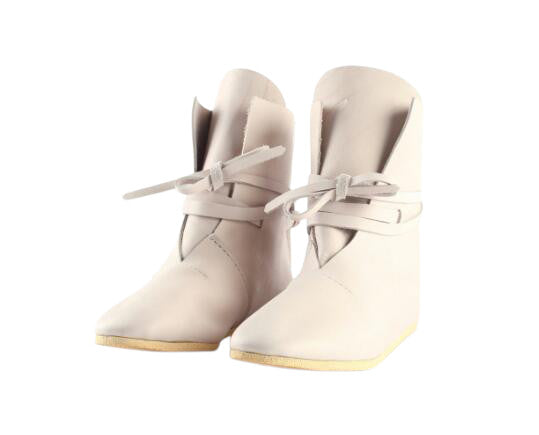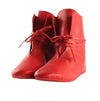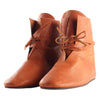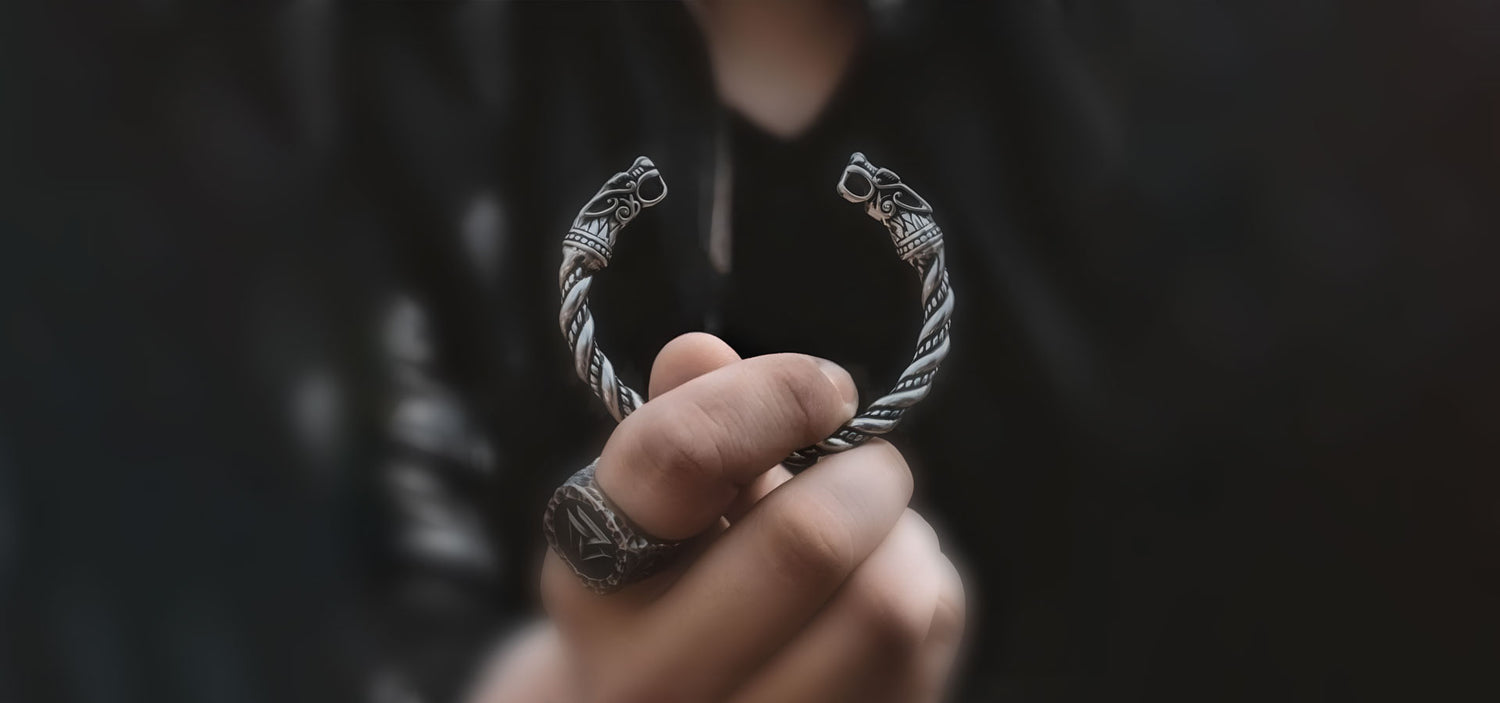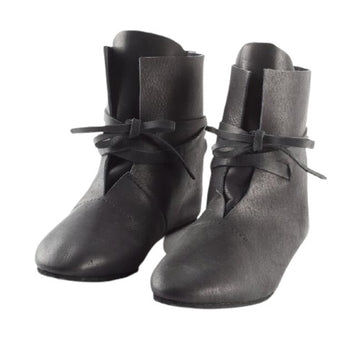Historical Viking Shoe
Regular price
€218,99 EUR
Sale price
€218,99 EUR
Regular price
€256,99 EUR
Save €38,00
Sold out
Tax included.
Black
Brown
Red
White
-
Shipping in less than 48 hours
Walk like a Viking
These half boots are developed in our 'Viking' collection and they are sure to become an essential part of your period wardrobe. These boots provide you with exactly what you need for a LARP or re-enactment event or any other period activity: the period look here is united with the comfort level of modern boots. Boots are made of genuine leather with natural leather sole protected with a rubber layer. Initially, these half boots are made of "rubbed leather" — it looks a bit aged and worn. Other leather options are also available.
Source: https://armstreetfrance.com/boutique/chaussures/bottes-exclusives-en-cuir-de-viking
Source: https://armstreetfrance.com/boutique/chaussures/bottes-exclusives-en-cuir-de-viking
The northern or mountainous regions required a more careful attitude to the feet: since the dawn of time they used pieces of leather attached by the laces to move and even designed the snowshoes. For many decades the most common method of production was the “upside down” method of medieval shoe construction which meant that the sewing process was done in reverse. Later in the 16th century it was replaced by the welt sewn method which eliminated the possibility because of the stiff sole.
Source: https://armstreetfrance.com/boutique/chaussures-medievales/ Some finer shoes may have been decorated with various motifs, as suggested by shoes from the end of the 12th century discovered in the Bryggen district of Bergen (Norway) , decorated with runes embroidered along the opening to the tip of the foot, or still others decorated with incised volutes.
Source: https://armstreetfrance.com/boutique/chaussures-medievales/ Some finer shoes may have been decorated with various motifs, as suggested by shoes from the end of the 12th century discovered in the Bryggen district of Bergen (Norway) , decorated with runes embroidered along the opening to the tip of the foot, or still others decorated with incised volutes.
Northern or mountainous regions required a more careful attitude to the feet: since the dawn of time, the Vikings used pieces of leather attached by laces to move around and even designed snowshoes. Vikings shoes were unisex, they were made of leather, sometimes in one piece held and closed by a leather lace.
The northern or mountainous regions required a more careful attitude to the feet: since the dawn of time they used pieces of leather attached by the laces to move and even designed the snowshoes. For many decades the most common method of production was the “upside down” method of medieval shoe construction which meant that the sewing process was done in reverse. Later in the 16th century it was replaced by the welt sewn method which eliminated the possibility because of the stiff sole.
Source: https://armstreetfrance.com/boutique/chaussures-medievales/
Source: https://armstreetfrance.com/boutique/chaussures-medievales/
The northern or mountainous regions required a more careful attitude to the feet: since the dawn of time they used pieces of leather attached by the laces to move and even designed the snowshoes. For many decades the most common method of production was the “upside down” method of medieval shoe construction which meant that the sewing process was done in reverse. Later in the 16th century it was replaced by the welt sewn method which eliminated the possibility because of the stiff sole.
Source: https://armstreetfrance.com/boutique/chaussures-medievales/
Source: https://armstreetfrance.com/boutique/chaussures-medievales/
The northern or mountainous regions required a more careful attitude to the feet: since the dawn of time they used pieces of leather attached by the laces to move and even designed the snowshoes. For many decades the most common method of production was the “upside down” method of medieval shoe construction which meant that the sewing process was done in reverse. Later in the 16th century it was replaced by the welt sewn method which eliminated the possibility because of the stiff sole.
Source: https://armstreetfrance.com/boutique/chaussures-medievales/
Source: https://armstreetfrance.com/boutique/chaussures-medievales/
The northern or mountainous regions required a more careful attitude to the feet: since the dawn of time they used pieces of leather attached by the laces to move and even designed the snowshoes. For many decades the most common method of production was the “upside down” method of medieval shoe construction which meant that the sewing process was done in reverse. Later in the 16th century it was replaced by the welt sewn method which eliminated the possibility because of the stiff sole.
Source: https://armstreetfrance.com/boutique/chaussures-medievales/
Source: https://armstreetfrance.com/boutique/chaussures-medievales/
These half boots are developed in our 'Viking' collection and they are sure to become an essential part of your period wardrobe. These boots provide you with exactly what you need for a LARP or re-enactment event or any other period activity: the period look here is united with the comfort level of modern boots. Boots are made of genuine leather with natural leather sole protected with a rubber layer. Initially, these half boots are made of "rubbed leather" — it looks a bit aged and worn. Other leather options are also available.
Source: https://armstreetfrance.com/boutique/chaussures/bottes-exclusives-en-cuir-de-viking
Source: https://armstreetfrance.com/boutique/chaussures/bottes-exclusives-en-cuir-de-viking
Your Historical Viking Shoe
- Men's Boots
- Leather manufacturing
- Item available in multiple sizes and colors
- Beautifies your appearance
- Satisfied or refunded
- Shipping in less than 48 hours
- Free delivery in Europe and Canada
- Customer service open 24/7 at your service
- From 60€ of items in your basket, receive a free clan bracelet
